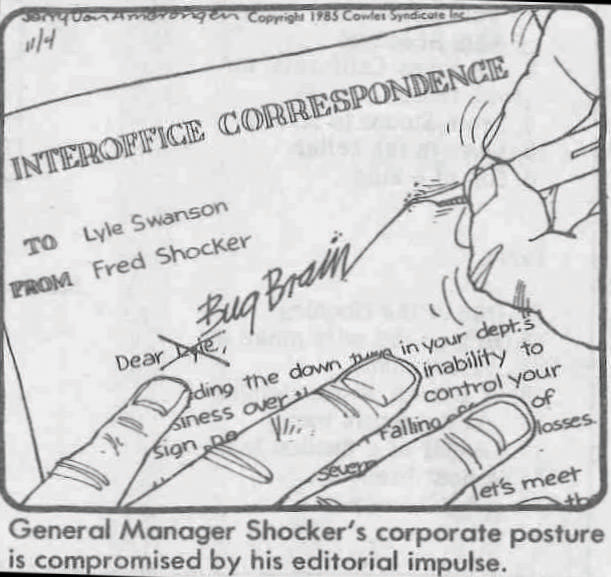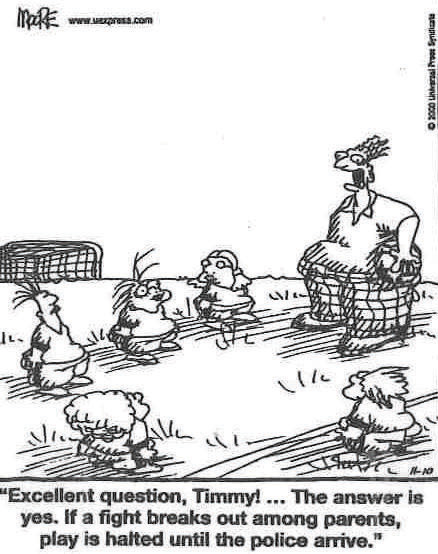This is “Conflict Styles”, section 10.4 from the book An Introduction to Group Communication (v. 0.0). For details on it (including licensing), click here.
For more information on the source of this book, or why it is available for free, please see the project's home page. You can browse or download additional books there. To download a .zip file containing this book to use offline, simply click here.
10.4 Conflict Styles
PLEASE NOTE: This book is currently in draft form; material is not final.
Learning Objectives
- List and describe a range of styles which people may use in cases of conflict.
- Distinguish between concern for self and concern for others as elements of conflict styles.
- Assess the nature and value of assertion as an ingredient in conflict.
The hard and strong will fall. The soft and weak will overcome.
Lao-tzu
If you’re a member of a group, you most likely want to minimize futile conflict—conflict that is unlikely to be resolved no matter what you do to address it. You also probably prefer to avoid conflicts which might weaken your group, or those whose nature or outcome is irrelevant to your goals. Once you and the other members of a group recognize that you are involved in a significant conflict whose resolution may make it more likely that you can achieve your goals, you may engage in the conflict via several styles. In this section we’ll consider “menus” of styles proposed by three groups of communication authorities.

Three Style “Menus”
All three style “menus” include a range of approaches, as represented in Table 10.1 "Individual Styles of Conflict in Groups". The styles described by Linda Putnam and Charmaine WilsonPutnam, L.L., & Wilson, C.E. (1982). Communicative strategies in organizational conflicts: Reliability and validity of a measurement scale, in M. Burgoon (Ed.), Communication yearbook 6 (pp. 629–652). Beverly Hills, CA: Sage. range from nonconfrontational to controlling and cooperative. According to Putnam and Wilson, if you adopt a nonconfrontational styleAccording to Putnam and Wilson, the practice of refraining from expressing thoughts and opinions during a conflict., you refrain from expressing your thoughts and opinions during a conflict. This may be because you’re shy or feel intimidated by the group environment or the behavior of some of its members. It may also be because you don’t know how to express viewpoints constructively under the time constraints of a conflict situation or lack information about the topic of the conflict. If you adopt a controlling styleAccording to Putnam and Wilson, the practice of attempting to force others in a group to agree with one’s position in a conflict., by contrast, you’ll try to monopolize discussion during a conflict and make a serious effort to force others in the group to either agree with you or at least accept your proposals for how the group should act. The cooperative styleAccording to Putnam and Wilson, the practice of participating in a conflict in a spirit of give and take. of conflict, finally, involves active participation in the group’s conflicts in a spirit of give and take, with the group’s superordinate goalsGoals which transcend those of individuals in a conflict and which all parties can subscribe to. in mind.
Rahim, Antonioni, and PsenickaRahim, M.A., Antonioni, D., & Psenicka, C. (2001). A structural equations model of leader power, subordinates’ styles of handling conflict, and job performance. International Journal of Conflict Management, 12(3), 191–211. enlarged upon Putnam and Wilson’s three-style “menu” by adding two further options. They framed their conceptualization in terms of potential combinations of two dimensions, concern for self and concern for others. Here are the options resulting from the combinations:
High concern for self and others (integrating styleAccording to Rahim, Antonioni, and Psenicka, a practice of being open and willing to exchange information and resolve conflict in a way that is acceptable to all.): Openness; willingness to exchange information and resolve conflict in a manner acceptable to all parties.
Low concern for self and high concern for others (obliging styleAccording to Rahim, Antonioni, and Psenicka, a practice of minimizing points of difference in a conflict so as to try to satisfy others’ needs.): A tendency to minimize points of difference among parties to a conflict and to try to satisfy other people’s needs.
High concern for self and low concern for others (dominating styleAccording to Rahim, Antonioni, and Psenicka, a win-lose approach to conflict in which one tries to compel others to accept one’s position.): A win-lose orientation and a drive to compel others to accept one’s position.
Low concern for self and low concern for others (avoiding styleAccording to Rahim, Antonioni, and Psenicka, a practice of sidestepping areas of conflict, passing the buck, or withdrawing from conflict entirely.): Sidestepping areas of conflict, passing the buck to others, or withdrawing entirely from the conflict situation.
Intermediate concern for self and for others (compromising styleAccording to Rahim, Antonioni, and Psenicka, an approach to conflict characterized by mutual sacrifice in the pursuit of outcomes that all members of a group can accept.): Mutual sacrifice for the sake of achieving an outcome that all members of the group can accept.
Table 10.1 Individual Styles of Conflict in Groups
| Putnam & Wilson | Rahim, Antonioni, & Psenicka | Adler & Rodman |
|---|---|---|
| Nonconfrontational | Integrating | Nonassertive |
| Obliging | Directly Aggressive | |
| Controlling | Dominating | Passive Aggressive |
| Avoiding | Indirectly Communicating | |
| Cooperative | Compromising | Assertive |
Adler and RodmanAdler, R.B., & Rodman, G. (2009). Understanding human communication (10th ed.). New York: Oxford University Press. emphasized communication elements in their listing of five conflict styles. First of all, they designated nonassertionAccording to Adler and Rodman, a style of conflict marked by inability or unwillingness to express oneself. as a style of conflict in which the group member is unable or unwilling to express him- or herself. According to these theorists, this conflict style is widely used in intimate relationships such as marriages, in which the partners may disagree with each other frequently yet decide not to provoke or prolong conflicts by voicing their differences. People in groups can display a nonassertive style by either ignoring areas of conflict, trying to change the subject when a conflict appears to be arising, physically removing themselves from a place where a conflict is taking place, or simply giving in to someone else’s desires during a conflict.
Direct aggressionAccording to Adler and Rodman, a conflict style involving willful verbal or nonverbal attacks on other people. is the second conflict style identified by Adler and Rodman. A group member who attacks someone else willfully—by saying “That’s ridiculous” or “That’s a crazy idea” or something else that attempts to demean the person—is engaging in direct aggression. Direct aggression need not be verbal; gestures, facial expressions, and posture can all be used to convey aggressive meaning.
Passive aggressionAccording to Adler and Rodman, a conflict behavior marked by subtle expressions of hostility or resistance which the party to the conflict may disavow., referred to as “crazymakingGeorge Bach’s term for passive aggression.” by George BachBach, G.R., & Goldberg, H. (1974). Creative aggression. Garden City, NY: Doubleday., is a subtle conflict style in which a person expresses hostility or resistance to others through stubbornness, resentment, procrastination, jokes with ambiguous meanings, petty annoyances, or persistent failure to fully meet expectations or responsibilities. Someone who displays this style of conflict may disavow any negative intent if confronted or questioned about his or her behavior.
Indirect communicationAccording to Adler and Rodman, a conflict style which uses hints, suggestions, or other polite means of seeking compliance from others with one’s desires. is a style which avoids the unmistakable force of the aggressive style and which instead implies concern for the person or persons it is directed toward.Kellermann, K., & Shea, B.C. Threats, suggestions, hints, and promises: Gaining compliance efficiently and politely. Communication quarterly, 44, 145–165. Rather than bluntly saying, “I’d like you to get out of my office now” when a discussion is bogging down, for instance, you might yawn discreetly or comment on how much work you have to do on a big project. Indirect communication may comprise hints, suggestions, or other polite means of seeking someone else’s compliance with one’s desires. Sometimes it can be used to send “trial balloonsTentative proposals designed to test how parties to a conflict may respond to later requests or other expressions of desire.” to group members—proposals which are tentative and provisional and don’t have a great deal of ego investmentPersonal, emotional commitment to an idea or course of action in a conflict. behind them.
AssertionA process of sending descriptive and normative messages in a conflict without coercing or judging other parties in the conflict. is the final style of communication identified by Adler and Rodman, and it is also the one that we recommend in most cases. Group members who operate according to this style express their feelings and thoughts clearly but neither coerce nor judge others while doing so. If you choose to use what Adler and TowneAdler, R.B., & Towne, N. (2002). Looking out/looking in (10th ed.). Fort Worth, TX: Harcourt Brace College Publishers. called a “clear message formatAccording to Adler and Towne, a five-step process of transmitting assertive messages in a conflict.,” you can practice assertion by following five steps in a conflict situation.

The first step is to offer an objective description of behavior being exhibited by those with whom you are in conflict. Don’t interpret or assess the behavior; just describe it. For example, you might say, “Lee, you just rolled your eyes at me.”
The second step is to present your interpretation of the behavior, but without stating the interpretation as fact. For instance, “Lee, I get the impression that you may have dismissed my proposal, because you rolled your eyes at me.”
The third step is to express your feelings about the behavior you’ve described and interpreted. For example, “When you roll your eyes like that, I get the impression that you’ve dismissed my proposal, and I feel resentful.”
The next step is to identify the consequences of the behavior, your interpretation, and your feelings. For instance, “Lee, I see that you rolled your eyes at me when I made my proposal. I get the impression that you’ve dismissed it, and I’m resentful. I don’t feel like discussing the matter any further now.”
The final step is to state your intentions, based on the four preceding ingredients of the situation. For example, “Lee, you rolled your eyes at me when I made my proposal. I get the impression that you’ve dismissed it, and I’m resentful. I don’t feel like discussing the matter any further now, and if I see you act this way again I’ll probably just leave the room until I calm down.”
We admit that following a list of communication behaviors like one this can feel unfamiliar and perhaps overly complex. Fortunately, being responsibly assertive can sometimes be a very simple matter which immediately yields positive results. In fact, following just one or two steps from the five outlined here may be sufficient to prevent, defuse, or resolve a conflict.
A friend of ours named Gus told us about a time when he was part of an enthusiastic crowd watching a football game at Washington State University. A few rows below him in the stadium sat an elderly woman, and directly in front of her was a man many inches taller and substantially heavier than she was.
The first time the WSU team made a good play, the man leapt to his feet and screamed wildly, blocking the woman’s view of the field. As the widespread cheering subsided, but with the man still standing in front of her, the woman calmly but forcefully said, “Sorry sir, but I can’t see.”

The man grunted roughly in response and kept standing until the rest of the crowd quieted. The next couple of times that WSU managed an impressive play—and this was one of those rare contests in which they did so on several occasions—the man jumped up again, preventing the woman from seeing the action over and over again.
Every time this happened, the woman spoke up, saying “Sir, I really can’t see” or “You’re blocking my view.” According to Gus, the effect of the woman’s assertive statements was like a series of weights being placed on the man’s shoulders. Eventually, he succumbed to the cumulative weight of her statements—the power of her assertions—and moved to an empty nearby seat.
Of course, not everyone who behaves in ways that we find objectionable will respond as positively as the oafish gentleman did to the elderly woman. Some people in the heat of a disagreement may resist even the mildest and least judgmental statements of assertion. How to deal with people who resist even responsibly assertive communication, along with other strategies to manage conflict in general, will be the subjects of our next section.
Key Takeaway
- Theorists have identified a range of conflict styles available to members of groups, including a five-step assertion approach which may offer the greatest general applicability and prospects for effectiveness because it avoids coercing or judging others.
Exercises
- Consider the adage “Discretion is the better part of valor.” To what degree do you feel it corresponds to what Putnam and Wilson called a “nonconfrontational” style of conflict?
- Think about a time when you experienced a conflict in a group that was eventually resolved. What style(s), from among those described in this section, did the parties to the conflict exhibit? Do you feel the people chose the best style for the circumstances? Why or why not?
- What specific statements or questions would you use to attempt to communicate with someone who habitually employs passive aggression in conflicts? Provide examples of your past experiences with such behavior, if you have them.
- Take another look at the cartoon in which the woman says “The remark you’ve just made has hurt me and I’m feeling anger toward you.” Does it seem funny to you? If so, what elements of the cartoon and its text amuse you? How would you change the drawing or the words to portray a healthful interaction between people based on responsible assertion?





